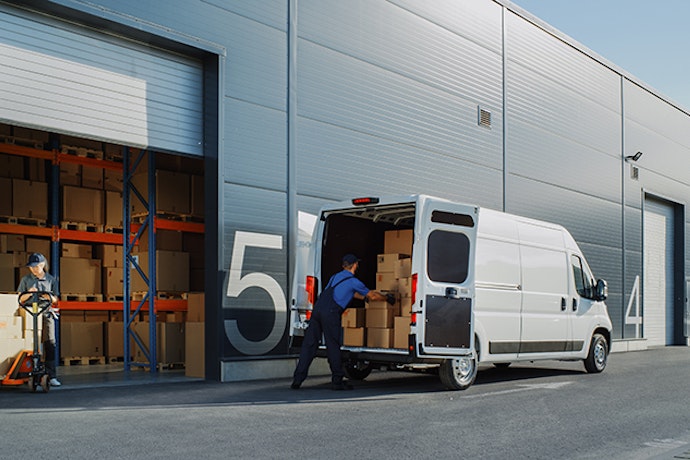Top trends in fleet management for 2024
The fleet management industry has seen significant changes in recent years. Learn how technology may impact fleet operations...
Read more
The last mile is considered the "make it or break it" stage for any supply chain. This delivery stage can have some of the biggest impacts on customers, drivers and the company’s bottom line. Customers have come to expect real-time information about the status of their delivery and a seamless delivery process.
A GPS fleet tracking solution can help companies keep their last-mile delivery costs low, coach drivers and meet customer expectations by supplying the necessary route, delivery and safety data to complete deliveries safely on time and on budget.
Learn how the right delivery management software can help your drivers make deliveries on time.
Customers want their shipments delivered on time and with as little interruption to their daily lives or operations as possible. And during the last mile, drivers, delivery persons and technicians are the face of their company—everything they do during this critical end-stage reflects the company’s level of service, putting its reputation on the line.
To rise to the challenge of growing customer demands, drivers need to be prepared with information about proper delivery routes, loading dock location and even parking restrictions or traffic flow. Fleet management technology can help make this happen with customizable route optimization, turn-by-turn directions right to the loading dock and geofences around customer locations to alert dispatch when the truck arrives.
Facing high pressure during the last leg of the delivery process, unsafe driving behaviors like speeding, harsh cornering or rapid acceleration may happen when a driver takes a wrong turn or tries to make up for time lost to traffic as they are completing their delivery. These behaviors are often exacerbated in more densely populated urban areas, where last mile delivery is likely to take place (think about the last time you drove through a major metropolitan area – there’s a lot going on).
With a fleet management solution in place, it’s possible to monitor these driving behaviors—and the situation that causes them—and coach drivers on how to avoid them in the future. Even after they reach their final destination, drivers may also need to navigate potential safety risks like turning into the wrong entrance or loading zone. With fleet technology, it’s easy to create a geofence or provide turn-by-turn instructions that help safely guide drivers to entry and exit points at an unfamiliar location.
Route optimization technology can provide an efficient combination of routes and deliveries to reduce miles per delivery and total miles driven. It’s also possible to adapt to last-minute changes, re-sequence routes and provide better ETAs with route optimization software. This near-real time communication can help prioritize driver safety and productivity, while providing customers with a better experience with more accurate delivery time windows and ETAs.
Not only does the last mile impact customers and drivers, but what happens during this stage can have a significant impact on a company’s expenses. Last mile fulfillment is only expected to increase as shortening supply chains create new freight opportunities and consumers continue to demand fast delivery speed, predictability and reliability.
With the help of GPS fleet tracking, it’s possible to identify inefficiencies and quickly coach drivers on how to avoid them, which can significantly cut down on associated costs—like fuel—and even boost productivity to help increase the number of stops each vehicle can make in a day.
A fleet management platform can provide visibility into routing, dispatching and what’s going on in the field. These insights allow dispatchers and fleet managers to work quickly if a driver is running late, going the wrong direction or is in the wrong location. This information can then be easily communicated to the customer.
Find out how businesses use fleet management for last mile delivery tracking and their integrated fleet operations. Download the eBook The Secret to Last Mile Delivery Success for key insights on last mile impact and the trends shaping the future of logistics.
Tags: Dispatching & Scheduling, Customer retention rates, Productivity & Efficiency, Customer Service, Cost control, Data & Analytics, Field management, Fuel cost management, Performance & Coaching, Routing, Safety




Find out how our platform gives you the visibility you need to get more done.
The fleet management industry has seen significant changes in recent years. Learn how technology may impact fleet operations...
Read moreImplementing a fleet management solution is a big decision for transportation & distribution fleets. Read our buyers guide...
Read moreLearn how innovations in video powered by AI and machine learning are helping to reshape safety and efficiency.
Read moreAre you ready for vehicle tracking? Go through our checklist to learn the signs you’re ready to add fleet tracking to...
Read more